Hi!This is Nami!we will bring you the latest information from Japan!
This time’s theme is this…
“How to ride in Japan!”
* This article was written by an administrator who is not good at English using a translation site.
Types of trains in Japan
There are different types of trains in Japan such as conventional trains that run on the ground, subways that run underground, monorails that generally run on elevated tracks, trams that run on roads, and Shinkansen that connect distant locations at high speeds.
“JR” connects all of Japan by rail, “Tokyo Monorail” and “Keikyu Line” are available from Haneda Airport, and “Tokyo Metro” is used to move around Tokyo’s underground.Various companies operate railways, which is a characteristic feature of Japan’s rail system.
The railways of each company are intertwined and very complex, especially in urban areas such as Tokyo and Osaka, making it difficult to navigate. However, by using a transfer website, you can easily find out which train to take and when to arrive by simply entering your “departure station” and “arrival station.”
Transfer Website:https://world.jorudan.co.jp/mln/en/
How to ride trains in Japan.
How to ride trains in Japan:
- Purchase a ticket called “kippu” or prepare an IC card.
- Pass through the ticket gates.
- Go to the platform where the desired train arrives.
- Board the train.
- Get off the train at the destination.
- Exit through the ticket gates.
This is the process. Is it the same or different from your country?
Buying a “kippu”(ticket) or preparing an IC card
First, purchase a ticket to your destination from a machine called a ticket vending machine, located near the entrance of the station. The vending machine is a touch panel and can be changed to English or Chinese, so it’s okay if you don’t understand Japanese!
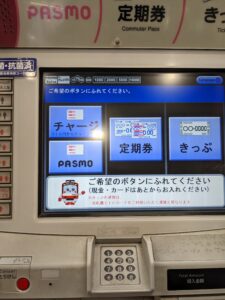
“Ticket vending machine” (This is for Keikyu Line)
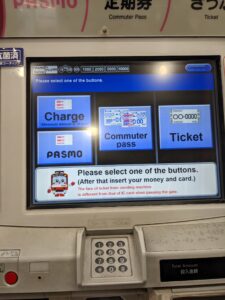
Can be switched to English or Chinese
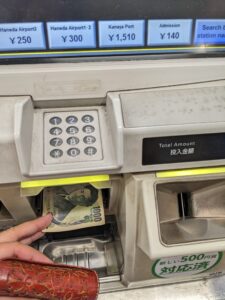
Insert money
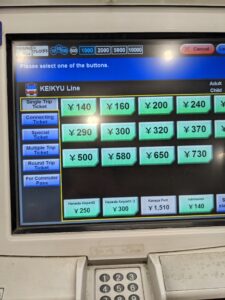
Touch the fare for the station you want to go to
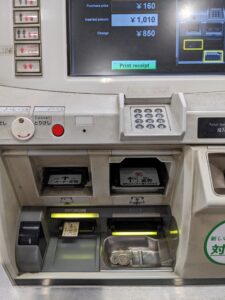
Don’t forget your ticket and change!
An IC card is an electronic money for transportation issued by railway companies, such as “Kitaka” for JR Hokkaido, “Suica” for JR East, and “Pasumo” for Keihin Kyuko Railway. (Most transportation IC cards can be used nationwide.)
By depositing money in advance on the card and touching it at the ticket gate, the fare is automatically deducted. The advantages are that you don’t have to buy a ticket every time, and the fare for IC cards is sometimes slightly cheaper.In addition to paying for fares, you can also use the charged electronic money at convenience stores and restaurants.
For those who plan to stay in Japan for a long time or frequently use trains and buses, it is also recommended to create a transportation IC card as a souvenir from Japan. You can cancel it when you return home.
Going through the ticket gate
With the purchased ticket or IC card in hand, proceed to the ticket gate.
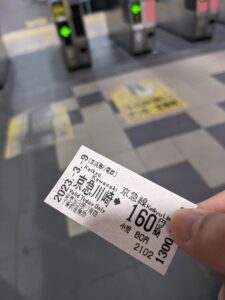
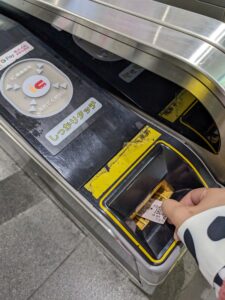
For tickets, insert them into the slot of the ticket gate machine. For IC cards, touch the top of the gate machine.
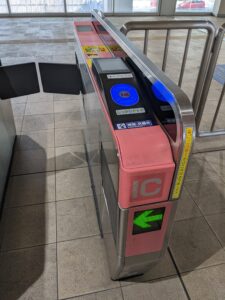
* Please note that some ticket gates do not have slots for tickets!
* Tickets will be returned at your destination station, so don’t forget to take them!
Going to the platform where the train for your destination is arriving
In Japan, most stations have multiple platforms, and some stations have complex structures where multiple railway companies operate. (Example: Shibuya Station, Shinjuku Station, Tokyo Station)It is recommended to check the departure information on the timetable and make sure which platform to go before heading to the platform.
Once you arrive at your destination platform, simply board the train and get off at your desired station. After getting off the train at your destination, go through the ticket gates to exit the station.The process for using the ticket gates is the same as before, but please note that you will not get your ticket back when exiting the gates.
That’s it for how to ride a train (conventional line) in Japan! It’s not that difficult, so don’t worry. If you don’t understand something, don’t hesitate to ask the station staff—they’ll be happy to help.
On this site, Nami, who lives in Tokyo, provides information about Japan. If you have any questions, things you want to see, or places you want to go, please leave a comment.
See you in the next article!
\ Follow me /
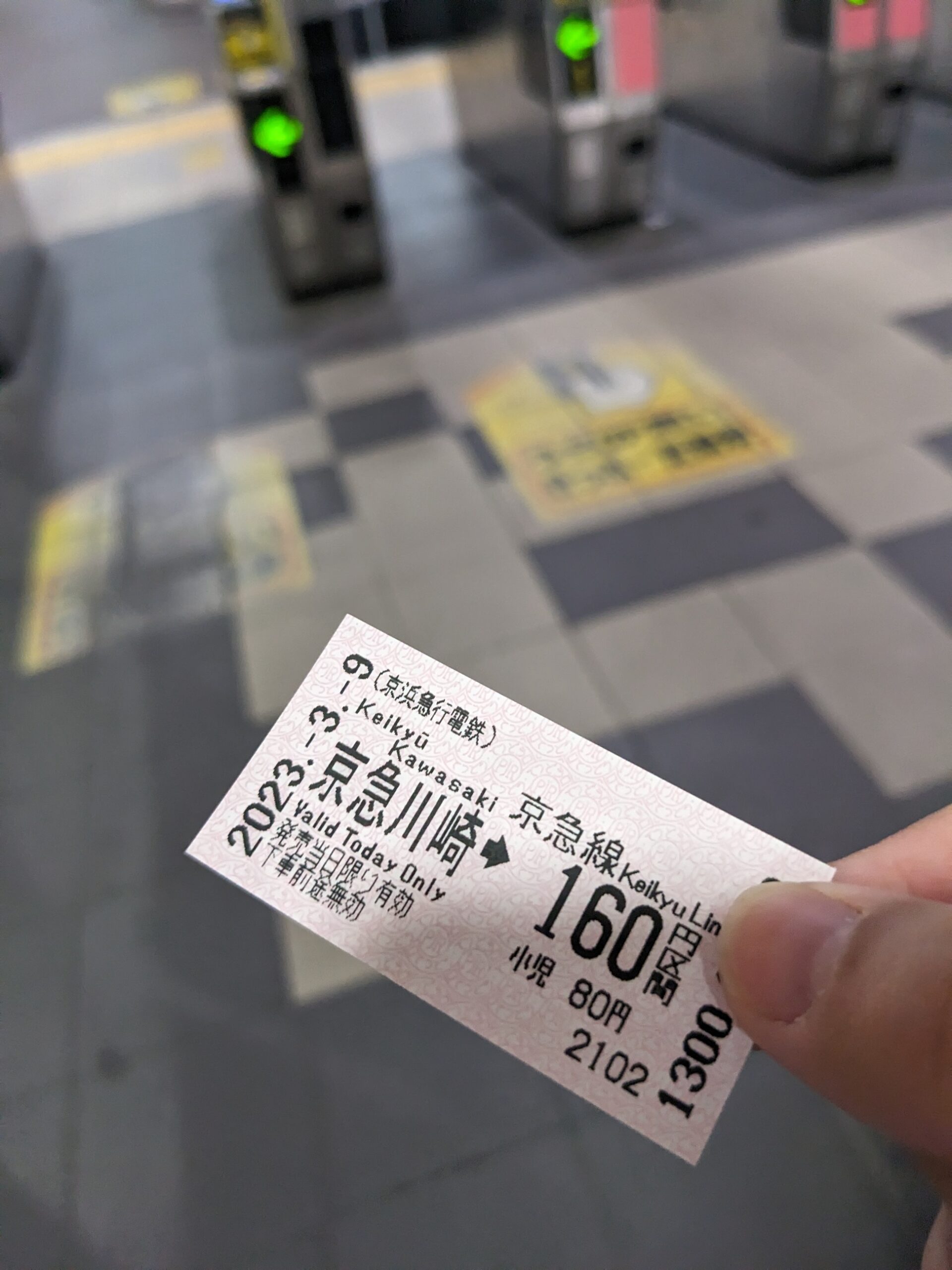



コメント